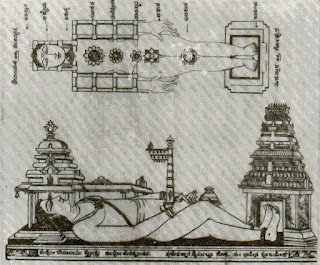| Assets | Definition |
| Cash - | Cash consists of cash and may include cash-like items such as short-term investments that can be quickly converted to cash. |
| Net Receivables - | Net Receivables are amounts owed to the company, net of any provisions for bad debts. |
| Inventories - | is merchandised bought for resale or supplies and raw materials purchased for use in revenue producing operations. |
| Other Current Assets - | includes prepayments, deferred charges, and amounts (other than trade accounts) due from parents and subsidiaries. It also includes any other current assets that are not assigned to cash and cash equivalents, receivables, or inventories. |
| Total Current Assets - | equals Cash and Equivalents + Receivables + Inventories + Other Current Assets. Total Current Assets is the total amount of assets that are considered to be convertible into cash within a relatively short period of time, usually a year. |
| Net Fixed Assets - | are the assets of a company that are of a relatively permanent nature and are not intended for resale, such as property, plants, and equipment. The figure is stated as cost minus accumulated depreciation and amortization. |
| Other Non current Assets - | Assets that are not assigned to Net Fixed Assets or intangibles. |
| Total Assets – | sum of all above particulars. |
| Profit and Loss | Definition |
| Revenue - | total sales from operations. For bank and finance it’s interest income from their usual investment. |
| Cost of Goods Sold- | includes all expenses directly associated with the production of goods or services the company sells (such as material, labor, overhead). It does not include SG&A or depreciation. While in Bank and Finance we could see interest expenses for deposit and borrowing. |
| Gross Profit - | equals Revenue minus Cost of Goods Sold. It identifies the amount available to cover other operating expenses. |
| Gross Profit Margin- | equals Gross Profit divided by Revenue, expressed as a percentage. The percentage represents the amount of each dollar of Revenue that results in Gross Profit. |
| Non operating Income – | is a residual category into which miscellaneous Non operating revenues and expenses are netted. |
| Total operating Income - | the sum of gross profit+ non operating income is taken as total operating income. |
| SG&A Expenses - |
Selling, General, and Administrative Expenses include all salaries, indirect production, marketing, and general corporate expenses. |
| Depreciation and Amortization - | is a non-cash charge that represents a reduction in the value of fixed assets due to wear, age, or obsolescence. This figure also includes amortization of leased property, intangibles, and goodwill, and depletion. |
| Non operating Expenses – | is the combination of "Other Taxes" and "Interest Expense." "Other Taxes," also known as other operating expenses, for most companies includes taxes other than income taxes (except excise taxes, which the company does not actually pay, but only collects on behalf of the government). For financial companies, all expenses other than interest expense and income taxes are included in Other Taxes. "Interest Expense" is all fixed interest expenses net of capitalized interest. This category also includes dividends on preferred stock of unconsolidated subsidiaries. |
| Total operating expenses- | staff expenses+ depreciation and the non operating expenses are taken as operating expenses.
|
Operating Income – | Total operating Income minus total operating expenses. It is the income from current operations. |
| Operating Margin - | Operating Margin equals Operating Income divided by Revenue, expressed as a percentage. |
| Income Before Taxes - | Income Before Taxes is the income from total operations (continuing + discontinued operations). |
| Net profit- | is taken as profit after provisions, staff bonus and tax deducted from income before tax. |
| |
| Earning per share (EPS) | Net profit to the shares. |
| |
| Dividends per Share - | The cash payment, per share, made by the company to its shareholders. Payment is usually made quarterly, but can be paid biannually |
|
|
| Cash flow | Definition |
Net Operating Cash Flow - | Net Cash Flow from Operating Activities is taken directly from the Statement of Cash Flows. |
Net Investing Cash Flow - | Net Cash Flow from Investing Activities is taken directly from the Statement of Cash Flows. |
Net Financing Cash Flow - | Net Cash Flow from Financing Activities is taken directly from the Statement of Cash Flows. |
| Net Change in Cash - |
is the difference between the Cash and Cash Equivalents at the beginning of the reporting period minus the amount at the end of the reporting period. |
| Depreciation & Amortization | is a non-cash charge that represents a reduction in the value of fixed assets due to wear, age, or obsolescence. This figure also includes amortization of leased property, intangibles, and goodwill, and depletion. This number is an add-back to the Statement of Cash Flows. |
Capital Expenditures - | s are capital outlays undertaken by the firm - - this number is the "Purchase of Property Plant and Equipment" figure from the Statement of Cash Flows. |
| Cash Dividends Paid - | The cash payment made by the company to its shareholders. Payment is usually made quarterly, but can be paid biannually |
|
|












Comments
Post a Comment
please enter true details, otherwise do not waste your time and our space